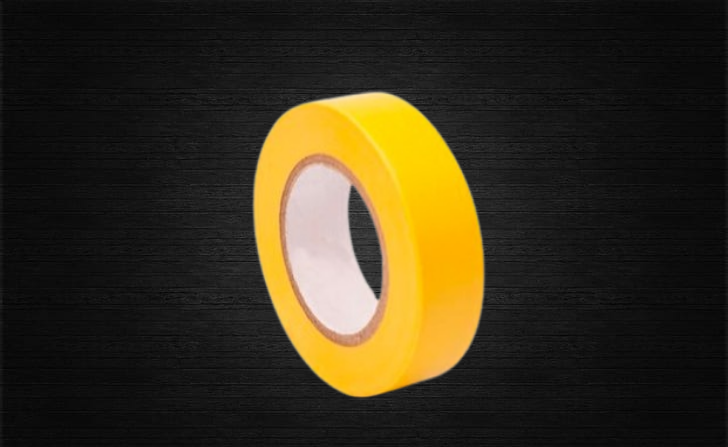Instead of sending messages home in binary code, Voyager 1 is now just sending back alternating 1s and 0s. Dodd’s team has tried the usual tricks to reset things — with no luck.
It looks like there’s a problem with the onboard computer that takes data and packages it up to send back home. All of this computer technology is primitive compared to, say, the key fob that unlocks your car, says Dodd.
“The button you press to open the door of your car, that has more compute power than the Voyager spacecrafts do,” she says. “It’s remarkable that they keep flying, and that they’ve flown for 46-plus years.”
Wow. I mean, yeah, but. Crazy.
It’s not remarkable they keep flying. They’re in space, just moving along their vector.
It is remarkable they keep operating though.
46 years of radiation, dust, and passing through the heliopause makes it pretty amazing that it’s still flying and not an irradiated ball of welding spatter.
Space is super empty. Not hitting anything that would change its path or physically destroy isn’t that wild.
Most stuff destroyed by time on earth is erosion or microbial breakdown, which isn’t an issue in space.
Especially seeing the original flight plan was for 5 years.
Here is an alternative Piped link(s):
now imagine pushing an update to it
Piped is a privacy-respecting open-source alternative frontend to YouTube.
I’m open-source; check me out at GitHub.
Voyager 1 is almost one light day away, and now my brain hurts thinking about it.
How many hard days is that?
Roughly just under one work day.
Pluto is only about 4.5 light hours away on average
1 light year = 63241.077 AU (distance between Sun and Earth)
Distance of Voyager 1 from Earth: ~162.84 AU
Not even close.
Sources:
He said day, not year.
Makes me miss the old sub /r/ConfidentlyIncorrect. I need to see if that exists on Lemmy anywhere.
Edit: Sure does: [email protected]
Hahahaha!! 🤣🤣
I’m pretty sure I read light year initially. Maybe OP modified their comment?
I could’ve have misread it also. 🤷♂️
It would say (edited) if they edited their comment
Ah alright then. My bad.
Would you say it is about 1/365th the the distance of a light year? I wonder if there is a term for that…
One light day?
But it’s a leap year so it should be longer this year.
Aaannnd I get to post this https://m.xkcd.com/2897/
You broke and reinforced relativity at the same time
Also, just for anyone else, the Sun is not 1 light year away from Earth, instead ~499 light seconds.
The distance between the sun and earth is ~93 million miles. A light year is 5.88 trillion miles. We are not 1 light year away from the sun. We are about 8.5 mins from the sun (speed of light) right?
It’s going to be like that Star Trek episode where they find Voyager and it’s evolved and achieved sentience.
Not an episode, the Motion Picture.
Ehh, they’re right and wrong. Nomad from the episode with the same title is the early version of what eventually became the plot concept for Vger in Star Trek: The Motion Picture.
V’ger, wasn’t it a movie?
Or 17776
Or the one the Klingons destroyed for target practice.
Ster-il-ize
Is there any reason we haven’t built a craft specifically to be slung out of the solar system as quickly as possible?
IIRC Voyager wasn’t built for this, it’s just a bonus that they’re still semi operational.
Space travel is very expensive and NASA has a very small budget these days.
Back during the space race, NASA could afford to launch multiple missions per year. Now they can barely afford to maintain existing missions and are lucky to launch a major missions every few years. Which is why they’ve moved to buying space on commercial missions, as it’s cheaper to only pay for a spot on a rocket/craft than to pay for the whole thing.
NASA also has to justify its missions to congress. Sending rovers to mars and probes to the moons of Jupiter and Saturn have actual scientific interest and can answer questions about the formation of the solar system, and the viability of life off of earth.
Slingshotting something really fast sounds cool as fuck, but there’s not much data to be gathered there. We’ve also recently beaten the “fastest man made object” record with the Parker Solar Probe, as it’s currently whipping around the sun at ludicrous speeds while it collects data about the solar atmosphere and magnetic fields. It’s moving a lot faster than voyager ever did, as it needs an insane amount of speed to orbit so low to the sun. It’s actually much cheaper, fuel wise, to travel to Pluto than the sun.
So why waste billions of dollars to fling something out into deep space? We have barely even seen all Of the celestial bodies in our own star system, and there’s not much to be learned about the empty vacuum beyond the sun. The only justifiable reason would be to send a probe to another star system entirely. But that probe alone would have to be the largest, most expensive space craft humanity has ever built. It would need to be able to power itself for centuries, have a communication system capable of sending data over interstellar distances, and likely need a way to autonomously harvest its own fuel, as there’s very little point in sending a probe screaming past Proxima Centauri and taking a few hazy pictures of planets as it goes. We’d want the probe to be able to stay in and explore the new star system, and the only way to do that is to have enough fuel to move around an entire system, or create more fuel as it goes. Something like that has never even been tried before, and the risk is high when you won’t know if it worked or not for a few hundred years.
I believe there was a case made to chuck something out perpendicular-ish to the ecliptic to see what shape the heliopause and solar wind take out there, what gases are kicking around etc. Maybe check out one of the high inclination objects kicking around out there as they tend to be odd ones. Almost all exploration has been done in-plane for obvious reasons.
Commercial launch providers have made launching everything way cheaper, so I can see an agency doing this one someday even if it has to take a pile of gravity assists from the sun. As a bonus you also get a new Voyager traveling in a new direction.
I also can see a lot of people being confused as to why it couldn’t take pictures of the solar system from up there that look like the textbooks… Possibly creating a whole new generation of flat-earth-esque conspiracies lol
I want them to actually chuck a handful of small spacecrafts as far as they possibly can in orthogonal directions, then have them take parallax images for the nearest pulsars we don’t have direct distance measurements of. It would be nice to push back the sphere of distances we’ve measured that way.
Interesting insight, thank you.
Another important factor with the Voyager probes is that they got their solar escape velocity with the help of a very fortunate alignment of the outer planets that only happens once every 176 years. It was much cheaper to fling something out that far under those conditions, and we won’t see them again until 2153.
Might as well build a generation ship instead…
In addition to what others have mentioned, there’s also a problem of communication. Inverse square law is a bitch. It was actually assumed at the start that the limit of the Voyager missions would be communicating with the probes, but improvements in radio technology have kept it going longer.
Information on the heliopause is about the only useful thing we can get from something out that far. It turns out to be a lot more complex than we thought. After that, there’s nothing interesting until you can get to the next star, and our radio technology isn’t up for that.
Information on the heliopause is about the only useful thing we can get from something out that far. It turns out to be a lot more complex than we thought.
It seems to me that this would be worth a mission?
It’d be hard to justify a mission on that alone. At least for now. Get space based industry going and then there’s lots of missions that open up.
New Horizons will get there eventually, and from a brief search, it sounds like it could still get back useful data once it’s out that far. NASA will need to keep the communications line funded, though.
The planets needed to be in a certain alignment for the Voyager launches to work out like they did. The slingshot only works in one direction (if you go backwards, you lose momentum). Maybe we haven’t seen another such alignment since, or didn’t have a mission ready to launch if we did.
Is it possible that cosmic rays beyond the heliopause have damaged (bit-flipped) the radiation-hardened circuitry on board the spacecraft? That might cause it to start jibbering nonsense.
Or, and hear me out, aliens…
Vger
V’ger
V-GINY!
[Joke] They don’t want us to see what’s out there!
[X-Files reference] I hear it might be something called “the truth.”
There are a number of possibilities. We likely will never know what actually happened. A bit flip would be bad, but potentially fixable. If they can somehow force a reset. It could also be simple component failure, a bad capacitor, in the wrong place, and your computer goes haywire. Ditto for mechanical damage. A grain of dust, hitting the wrong point could cause a cascade of problems.
The backup systems are long dead. The fact they’ve managed to extend the mission life by 41 years is quite incredible. It was never expected to last this long.
God speed V’ger!
This was my take. No way to retain memory anymore.
That’s very likely what happened. The problem is that the control board that manages communications is so old that nobody can find any documentation on how it works, so they can’t even begin to figure out a fix.
Everyone involved with that project is also probably dead.
Everyone involved with that project is also probably dead.
Literally, the FIRST sentence of the article is talking about someone who’s been involved with Voyager I from the start. Yes, the project has outlasted many of it’s original engineers, but to say, “Everyone involved with that project is also probably dead,” for a major mission that launched 46 years ago is obviously untrue.
Guess you missed the word probably, but okay
Guess you missed the article entirely.
Heheh you feel better now?
You’re literally just wrong. Suck it up and move on. Nobody’s even cared enough to respond twice.
People are really touchy today, don’t take it personally. Remember that how someone treats you is almost always a projection of themself.
I guess it reached the limit of the sky box, there’s nothing running on the simulation after that.
I volunteer to go up there, fix it, change the batteries, install Doom. And don’t worry about the ‘fuel to get home’ issue.
Skyrim: Voyager edition
… sentient Lusty Argonian Maid AI from the future capable of altering space-time … would probably be more fun as a holodeck simulation than a real encounter.
What wound the plate read?
STY GON
Crazy that after all this time we can still communicate with Voyager 1. Even though it is babbling back now.
That’s actually not all that hard. They just have to blast it with a radio signal strong enough from Earth for it to hear and they have to have really big dishes on earth in order to hear it.
As an electrical engineer who dabbled in RF in school, that sounds supremely difficult.
Yeah, it’s most definitely not easy. Thankfully though, high frequency devices like that are very small wavelengths and therefore gain can be achieved with decently small antennas. The higher the frequency, the shorter the wavelength, and the shorter the wavelength, the smaller the antenna needed to receive it. Or a big antenna can hear it from further away, since it has a big collection area.
VGER is coming back.
Insert ill-advised and tasteless dementia joke here…
You mean:

Someone got to run an AI model on it and it’s hallucinating.
This is the best summary I could come up with:
The last time Stamatios “Tom” Krimigis saw the Voyager 1 space probe in person, it was the summer of 1977, just before it launched from Cape Canaveral, Florida.
“It basically stopped talking to us in a coherent manner,” says Suzanne Dodd of NASA’s Jet Propulsion Laboratory, who has been the project manager for the Voyager interstellar mission since 2010.
So to try to fix Voyager 1’s current woes, the dozen or so people on Dodd’s team have had to pore over yellowed documents and old mimeographs.
“They’re doing a lot of work to try and get into the heads of the original developers and figure out why they designed something the way they did and what we could possibly try that might give us some answers to what’s going wrong with the spacecraft,” says Dodd.
Linda Spilker, who serves as the Voyager mission’s project scientist at NASA’s Jet Propulsion Laboratory, says that when she comes to work she sees "all of these circuit diagrams up on the wall with sticky notes attached.
Mission managers have turned off heaters and taken other measures to conserve power and extend the Voyager probes’ lifespan.
The original article contains 1,083 words, the summary contains 191 words. Saved 82%. I’m a bot and I’m open source!
Inevitable, but sad none the less.
Crossing my fingers for the engineering and science teams.
Geek out question: is radiation much of a factor in degradation given:
- It’s moving further away from the Sun
- It’s traveling down solar wind so the total exposure is less than something in solar orbit
And how damaging is background cosmic radiation compared to our Sun’s?
Fun to ponder
posting from vger.app, sad to see its namesake will have this fate













